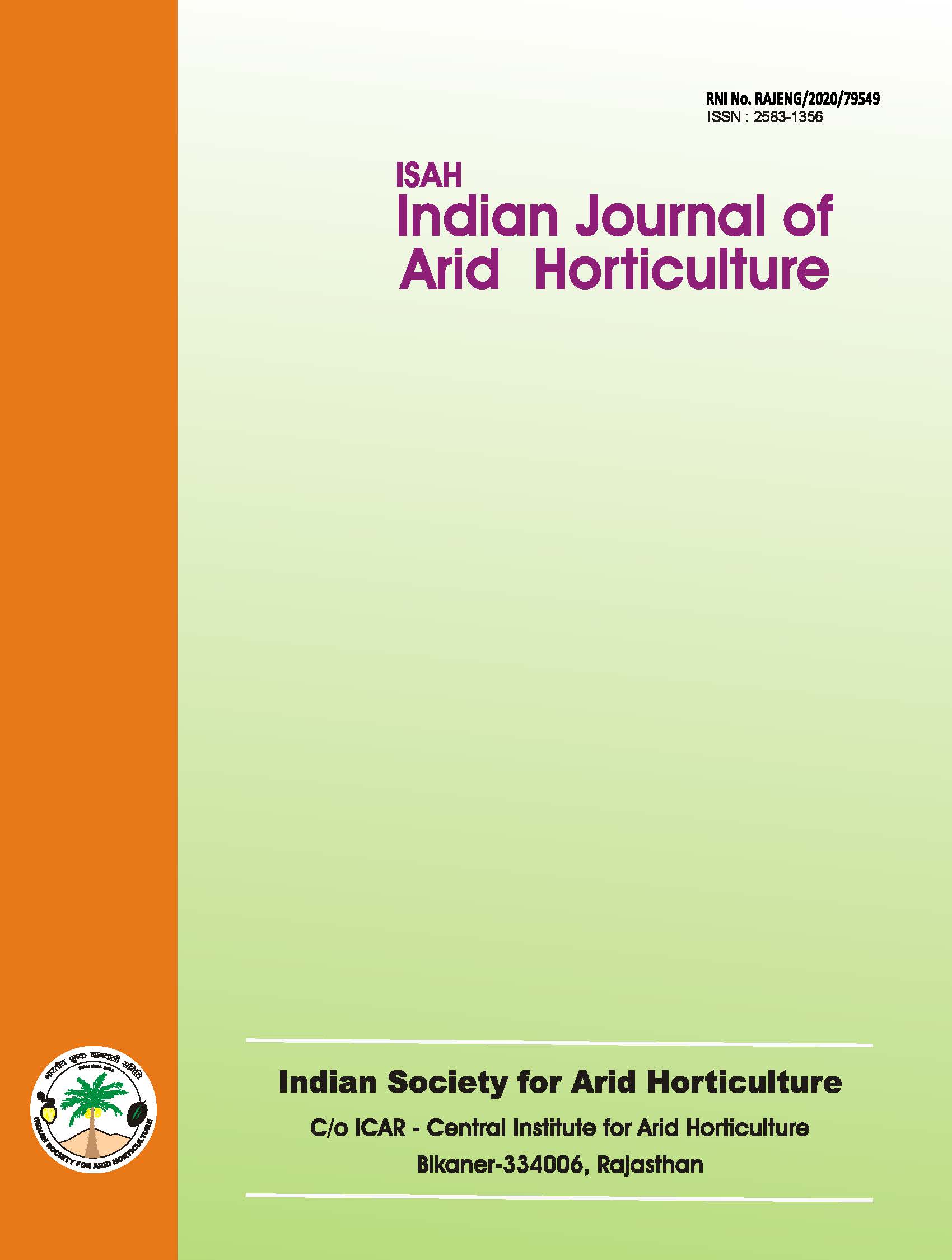A case study of crown bending disorder in date palm cv. Barhee and the impact of cyclone Biparjoy
DOI:
https://doi.org/10.48165/ijah.2024.6.1.10Keywords:
Date Palm, Phoenix dactylifera, Cyclone Biporjoy, Crown BendingAbstract
Date palm (Phoenix dactylifera) is one of the oldest cultivated fruit crops in the world, and in India, it is believed to have been cultivated for more than four and a half centuries, where a significant area under cultivation is under the Kachchh district of Gujarat, which accounts for more than 85 % of the total area and production of the country (Muralidharan et al., 2022). Unlike other countries, harvesting of the date fruits is mostly done in the khalal stage while most countries harvest at their tamar stage due to the climatic conditions (incidence of early rainfall). Among the various cultivars evaluated, cultivar Barhee was recommended by Date Palm Research Station, Mundra, under AICRP-Arid Zone Fruits for cultivation in Gujarat in 2002 (Sharma et al., 2019), and since then Barhee has become the primary cultivar of the country, with a population of more than three lakh plants in Gujarat itself (data collected through personal communication).
Downloads
References
Anonymous. 2023. Very Severe Cyclonic storm “Biparjoy” (pro nounced as “Biporjoy”) over Northeast Arabian Sea: Cyclone warning for Saurashtra and Kutch coasts (Red Message) [Bul letin No. 76 (ARB/01/2023), Dated 15.06.2023]. Indian Metro logical Department, Ministry of Earth Sciences, New Delhi.
Darley, E.F. and Wilbur, W.D. 1955. Results of experiments on con trol of fruit spoilage of Deglet Noor and Saidy dates in Califor
nia, 1935-1954. Ann. Rep. Date growers’ Instit. 32: 14-15. Darley, E.F., Nixon, R.W. and Wilbur, W.D. 1960. An unusual dis order of barhee date palms. Ann. Rep. Date Growers’ Instit., 37: 10-12.
Darley, E.F., Nixon, R.W., Wilbur, W.D. and Carpenter, J.B. 1964. Second report on the bending tops of Barhee date palms. Ann. Rep. Date Growers’ Instit., 41:16.
Djerbi, M. 1983. Report on consultancy mission on date palm pests and diseases. FAO-Rome. Pp. 28.
Hussain, A.A. 1974. Date palms and dates with their pests in Iraq. Univ. of Baghdad, Ministry of Higher Education and Scientific Research, Iraq. Pp. 166.
Yost, L. 1968. Correction of Barhee bending by bunch han dling practices. Ann. Rep. Date Growers’ Instit., 45:2.
Muralidharan, C.M., Sharma, K.M. and Baidiyavadra, D.A. 2019. Crown bending studies in date palm (Phoenix dac tylifera) cv. Barhee in date groves of Kachchh (Gujarat), India. Journal of Applied Horticulture, 21(3): 201-204.
Muralidharan, C.M., Sharma, K.M. and Baidiyavadra, D.A. 2022. Date palm cultivation in India: research achieve ments, gaps and future strategies [Technical Bulletin 02/2022]. Date Palm Research Station, Sardarkrushinagar Dantiwada Agricultural University, Mundra-Kachchh, Gujarat.
Sharma, K.M., Muralidharan, C.M., Baidiayavadra, D.A., Panchal, C.N. and Verma, P. 2019. Varietal evaluation of date palm (Phoenix dactylifera L.) in Kachchh, India. Journal of Plantation Crops, 47 (3): 152-157.

